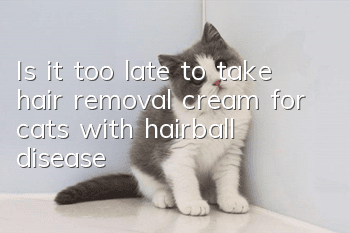How to bathe a cat, and how often is it better for a cat to bathe?

The frequency of bathing your cat depends on the age and breed of the cat. Generally speaking, do not bathe kittens under 6 months old to prevent them from getting sick and catching cold after bathing. If the kitten makes itself very dirty due to naughtiness, you can consider wiping it with a hot towel or brushing it with a brush. For cats over 6 months old, short-haired cats generally take a bath once or twice a month, and long-haired cats generally take a bath once every 2 months.
Water temperature control · Be careful
Suitable water temperature. When bathing a cat, it is important to control the water temperature. Water that is too cold or too hot can irritate cats and cause them to panic and feel uneasy. The most suitable water temperature is one that feels warm to the touch with our hands, about 40 to 50 degrees Celsius, because cats’ body temperature is higher than that of humans. If it feels warm to us, it will feel cold to cats. Keeping the room warm will prevent your cat from getting cold and causing a cold.
Space adaptation·Be patient
Soothe him first, then take a bath. It is best to bathe a cat in a bathroom with a small space so that the cat can be controlled more easily. But don't suddenly take it to a small room and close the door, as this will make them feel uneasy. Therefore, don’t turn on the water immediately as soon as you enter the bathroom. It is best to touch him first, soothe his mood, and wait until he calms down before taking a bath. If conditions permit, it is recommended that two people bathe the cat together, and you can wear gloves to avoid unintentional harm caused by the cat's rejection of bathing.
How to take a bath · Be considerate
Use a shower, not a bathtub. Because cats are very afraid of "entering the water", and they will naturally struggle desperately as they watch you stuff them into the water. When you put a cat into the water, does the cat try its best to escape? So it is recommended that you give the cat a shower. It would be less of a struggle to use a shower.
Product selection · Be careful
Take a bath with pet-specific bath soap. Human bath soaps and shampoos are not suitable for cats. Because cat skin is neutral, while human toiletries are alkaline. This is harmful to the cat’s skin. Long-term use will reduce their immunity and make them prone to skin diseases.
Bathing sequence · Be careful
Wash the body first, then the limbs, and finally the head. Cats are very irritable about bathing, so in order to ease their mood, it is best to start washing from the body. Back, sides, belly, neck, tail, limbs. For the cat's head, it is best not to rinse it to prevent water from getting into the ears. Moreover, cats’ heads have short hair, which is easy to clean.
Precautions · Post-bath care
First use a towel to absorb part of the water from the cat. When using a hair dryer, pay attention to the distance between the cat and the cat. Use hot air to blow it, and never blow it towards their face. If the cat is not frightened by the sound of the hair dryer and cannot control it, you can let the cat put its head into your arms and cover its head to dry it.
The most important thing is to blow dry the hair on the back and belly. The limbs can be dried later, because sometimes they can lick dry by themselves. After drying the cat's hair, give the cat a certain amount of time to calm down its mental state that is somewhat "trance-like" due to the bath.
If you want your cat’s fur to remain smooth and supple for a long time, cleaning alone is not enough. The pet’s nutritional supply is equally important. The intake of zinc, vitamin B5, vitamin B2, Omega-6 fatty acids, etc. will affect the health of their coat. If the nutritional structure is not reasonable, the cat's fur may also become dull and yellow.
- The cat suddenly became anorexic and became skin and bones
- What should I do if my cat’s nail clipping bleeds?
- Will pregnant cats become sleepy?
- How to deal with cat poop on your body
- Why do cats act like crazy after pooping?
- How to train a well-behaved cat? Teach you how to educate your cat!
- How many kilograms is normal for a Ragdoll cat to weigh at half a year old? Ragdoll cat weight standard!
- Why do cats like to eat mice? Explain from a scientific perspective why cats eat mice!
- Will cats get tired of eating the same cat food all the time?
- The Secret of Cats: The Persian Cat, the Lady of Cats!



